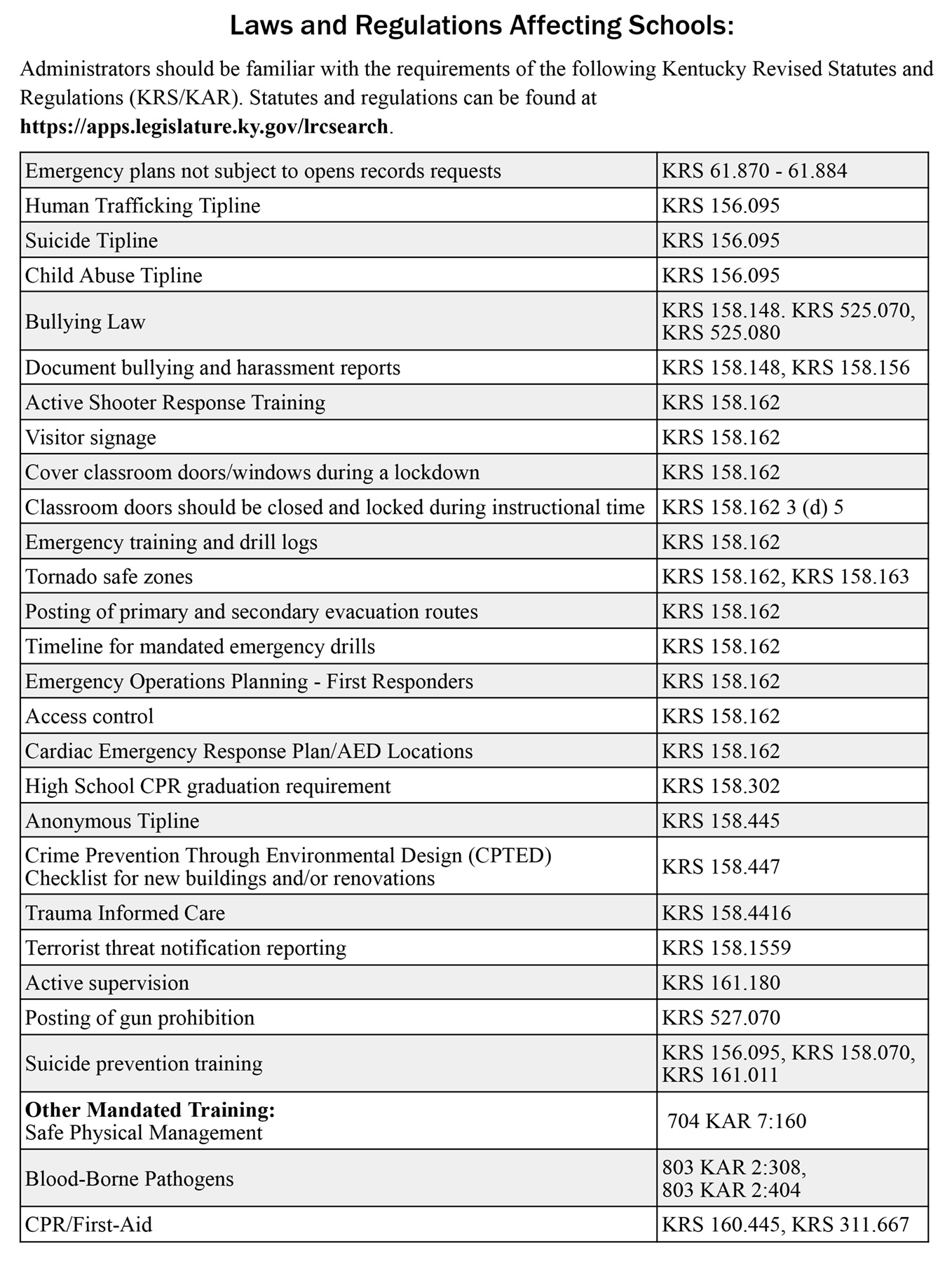Justice and Law Resources
School Safety and Resiliency Act – Kentucky Department of Education – In 2019, the Kentucky General Assembly passed the School Safety and Resiliency Act, commonly known as Senate Bill 1 or SB1 (2019). This Act affected multiple statutes regarding school safety and student resiliency. These statutes impact education and many agencies that work with districts and schools.
Indicators of School Crime and Safety – A joint effort by the Bureau of Justice Statistics and the National Center for Education Statistics, this annual report examines crime occurring in schools and colleges. This report presents data on crime at school from the perspectives of students, teachers, principals, and the general population from an array of sources–the National Crime Victimization Survey, the School Crime Supplement to the National Crime Victimization Survey, the Youth Risk Behavior Survey, the School Survey on Crime and Safety, the School and Staffing Survey and the Campus Safety and Security Survey.
Cyberbullying Tip Card For Law Enforcement – The IACP and the National Center for Missing & Exploited Children (NCMEC) have jointly released a tool for law enforcement titled Preparing and Responding to Cyberbullying: Tips for Law Enforcement. The resource was developed under a project supported by the Office of Juvenile Justice and Delinquency Prevention (OJJDP), Office of Justice Programs, U.S. Department of Justice. The tip card includes over 20 recommendations to address cyberbullying from subject matter experts working in law enforcement, youth trauma, mental health, computer crimes, victim services, and education. It provides guidance on cyberbullying prevention, preparation, response, and investigation to law enforcement administrators and first responders.

